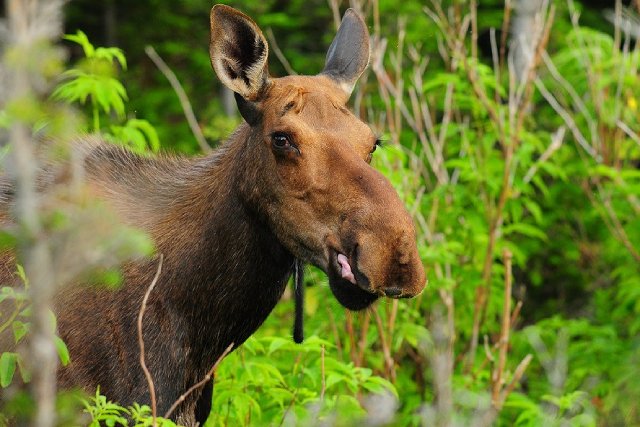
Moose management
Gros Morne National Park
- A hyper-abundant introduced species
- A severely impacted forest ecosystem
- Moose management
- A healthier forest ecosystem
- Forest restoration
- Information about the moose harvest
A hyper-abundant introduced species

Moose were introduced to Newfoundland over 100 years ago and in the absence of predators, and with an abundant food supply, their numbers increased rapidly. Hunting was prohibited in Gros Morne when the national park was established in 1973, and then outbreaks of defoliating insects in the 1970s, 1980s and 1990s allowed an abundance of young trees and shrubs to grow back.
This made the park into a haven for moose, and the population grew to record levels, peaking at more than 7000 animals by 1998. This equated to an average density of over 4 moose per square kilometer of habitat!
A severely impacted forest ecosystem

Eventually, the moose population in Gros Morne National Park became much greater than the forest ecosystem could support. The damage caused by moose reached critical levels, leading to a failure in forest regeneration as young trees and shrubs were repeatedly browsed. Preferred species of deciduous trees and shrubs became severely depleted.
The impact also became noticeable on young balsam fir that made up most of the regenerating forest. A single moose can eat 18 kilograms, or almost 40 pounds, of plant material every single day, and this quickly outpaced the forest’s ability to grow. Many of the trees that managed to survive became stunted and deformed, unable to grow tall enough to escape from hungry moose. In particularly hard-hit areas, the young trees died and were replaced by grasses, ferns, and other herbaceous plants. This led to the conversion of the young forest to savannah-like ‘moose meadows’.
Moose management

To address the threat of the moose hyper-abundance, Parks Canada initiated a moose management program in Gros Morne in 2011. Through this program, Newfoundland and Labrador resident volunteers have been able to apply for a license to harvest a moose in the park through the annual provincial big game license draw.
This program has been successful and the moose population in Gros Morne has now been reduced. It is now being maintained near the target size of 2000 animals, which should be low enough to allow natural forest regeneration to return to the park.
A healthier forest ecosystem

The park has documented strong signs of recovery in the forest ecosystem as a result of the reduction of the moose population. Browse rates have dropped, and the abundance and height of young trees and shrubs has increased. In the understory of the mature forest, as well as in most disturbed areas, there is evidence of healthy regeneration of balsam fir.
Excessive browsing by overabundant moose can also impact the forest ecosystem’s ability to capture and store carbon from the atmosphere, so managing the moose population at this more natural density contributes to nature-based solutions to climate change.
Forest restoration

Thanks to the success of the moose management program, the ecological integrity of the forest ecosystem in Gros Morne National Park is now improving. But is the forest sufficiently resilient to self-regenerate everywhere in the park?
In some of the most severely impacted ‘moose meadows’, forest recovery has been limited. Moose had already killed most of the young trees before the management program began, and the dense cover of herbaceous plants that grew back is keeping new seedlings from establishing. In these places, it became obvious that forest restoration would be the next step forward for Parks Canada. Learn more about the work Parks Canada is undertaking to restore these sites here.
Related links
- Date modified :